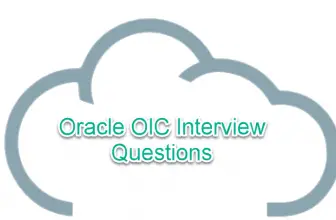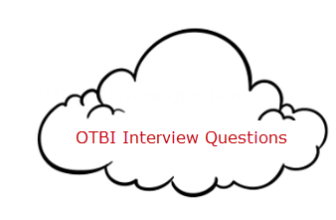
Mulesoft is a cloud integration platform that can help in developing complex SaaS integrations with heterogeneous cloud applications.
some other major players in this space are Dell Boomi, Jitterbit, and Oracle OIC.
so let’s get into some Mulesoft Interview Questions.
Table of Contents
FAQs: Mulesoft Interview Questions
-
What is MuleSoft used for?
Mulesoft is a cloud integration platform for integrating Cloud and on-premise heterogeneous applications.
-
What is Anypoint Exchange in MuleSoft?
Anypoint Exchange is the IDE interface to search API assets and resources which can be added to our processes. We can test APIs and generate sample payloads.
-
What is Mule Runtime?
Mule Runtime Is an environment (App Server) to deploy and manage mule applications with runtime manager.
-
What is Mule ESB?
Mule ESB is an architecture framework that can be used to integrate multiple applications using the bus-like infrastructure. Each can use different protocols.
-
What is RAML?
RAML is a short form of Restful API Modelling Language. RAML is used to describe REST services. It uses JSON.
-
What is an Anypoint Platform?
AnyPoint platform is a hybrid integration cloud platform on which we can create an application network of data and services .
-
What is Anypoint Studio?
It is a desktop IDE to develop our integration which can be deployed on cloudhub.
-
What is the difference between SOAP and REST services?
In short, SOAP is heavy and REST is light with payload. Refer to this article for a more detailed explanation.
-
What is a connector in MuleSoft?
A connector is used in integration process application to define what protocol to be used and if any parameters. once deployed the service endpoint can be called as per the protocol specified.
-
How do you handle the security of credentials in your App?
We can save the credential in the local properties file and configure it for encryption while deploying.
-
What are the types of Exception Handling in MuleSoft?
There are five types of Exception Handling in MuleSoft.
Choice Exception Handling.
Default Exception Handling.
Global Exception Handling.
Rollback Exception Handling.
Catch Exception Handling. -
What is Fan-in and Fan-out?
Fan-out: The Fan-Out primitive is used to fire the output terminal once or multiple times. Fan-Out can be used independently or with Fan-In.
Fan-in: Fan-in helps in taking a decision to continue flow execution. Until a decision point is reached the last message is sent to the output terminal. It can also be used with Fan-Out.
-
What are the types of endpoints in Mule ESB?
these are
HTTP, AJAX, SMTP, IMAP and JMS -
How to execute parallel programs in MuleSoft?
scatter-gather or batch jobs can be used to do parallel processing in mulesoft.
-
How will you combine two arrays objects into one?
We can use flatten dataweave function to merge two arrays into one.
-
What are SDO and SMO?
SDO – Service data objects which represent variables and objects.
SMO- Service Model Object and it uses SDO for messages. -
Define Mule UMO?
UMO is Universal Message Object; UMO components are also referred to as service components.
-
Explain the concept of Correlation Context?
When the mediation primitive requires passing the value from the request flow to response flow the correlation context plays the role.
-
Define the available resources used for modularizing configuration in mule?
Available resources are
Independent Configuration
A Mule instance is capable of loading multiple independent configuration files one after another.
Inherited Configuration
As the term inheritance referred to represent the parent and child relationships between the instances this configuration also showcases the parent-child relationship between two configurations.
It strongly provides this dependency with the guarantee that no configuration file will be omitted at the time of application booting. It used the same name for the parent and child models. -
What is the difference between service invoke and Callout?
Service Invoke:
Service invoke is an initial process of creating a service for either request or response flow.
Multiple instances of a service can be created and permitted into a flow, that allows a series of services to operate within the flow.
CallOut:
CallOut method is to receive messages and request the required service and operation in a flow. There is a CallOut node always presented into the median flow for connected target operation. -
Name the features in Mule ESB?
Message Routing Service.
Message Transformation Service.
Set of Service Container.
Web Service Security. -
What is the difference between Stop and fail?
It is used to stop the particular path inflow without generating any exception.
Fail: Generates a failure in the flow. -
What are the different types of variables in Mule?
There are three different types of mule variables.
Record variable.
Session variable.
Flow variable. -
What are the characteristics of a global endpoint?
The characteristics are:
-The global service name is applied for referring to the endpoint.
-It helps in clarifying the usage of particular destinations.
-The global endpoint is not typified or outbound routing.
-It is used in configuration files at different locations. -
Name the languages supported by MuleSoft?
The supported languages of MuleSoft are:
Python.
Groovy.
Ruby.
Javascript. -
What is a Choice Router?
Choice Router is a dynamic router which routes the messages inflow. The message content is evaluated based on a set of DataWeave expressions.
-
What is the use of Filter in a MuleSoft?
Filters help routers in making smart decisions on message delivery or request and response environment. It also provides insights to the router for deciding what to do with the messages in the transit stage.
-
How can you implement a loop in mediation?
By using Fan-in and Fan-out primitive.
Hope these mulesoft interview questions help.
[content-egg module=Udemy]
Check out Mulesoft Anypoint Platform
Other interview questions









